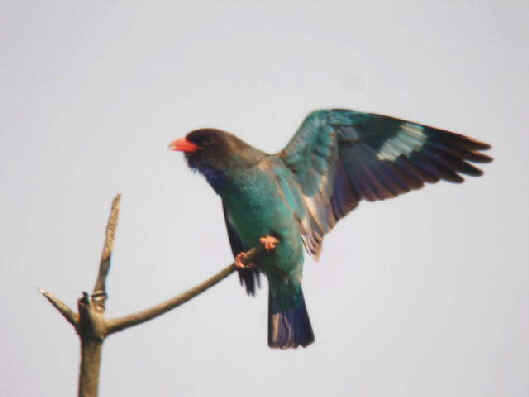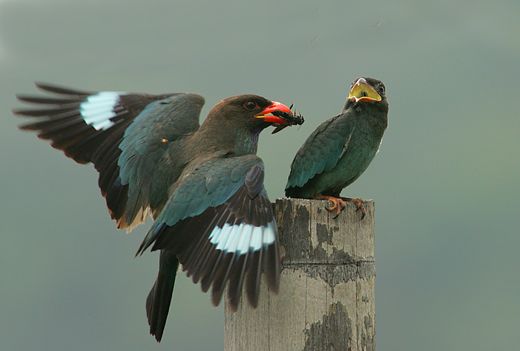Dollar Bird Biography








The Dollarbird is the sole Australian representative of the Roller family, so named because of their rolling courtship display flight. The Dollarbird visits Australia each year to breed. It has mostly dark brown upperparts, washed heavily with blue-green on the back and wing coverts. The breast is brown, while the belly and undertail coverts are light, and the throat and undertail glossed with bright blue. The flight feathers of the wing and tail are dark blue. The short, thick-set bill is orange-red, tipped with black. In flight, the pale blue coin-shaped patches towards the tips of its wings, that gave the bird its name, are clearly visible. Both sexes are similar, although the female is slightly duller. Young Dollarbirds are duller than the adults and lack the bright blue gloss on the throat. The bill and feet are brownish in colour instead of red.
The Dollarbird arrives in northern and eastern Australia in September each year to breed. In March or April the birds return to New Guinea and adjacent islands to spend the winter.
Dollarbirds feed almost exclusively on flying insects. They search for food from a conspicuous perch and then capture it in skilful aerial pursuits, before returning to the same perch. Occasionally, Dollarbirds have been seen feeding on grasshoppers on the ground, although this practice is uncommon.
During breeding season, pairs of Dollarbirds are often seen flying in characteristic rolling flights. These flights are more common in the evening, and are accompanied by cackling calls. The white eggs are laid in an unlined tree hollow and are incubated by both adults. The young birds are also cared for by both parents. The same nesting site may be used for several years.
Dollar Bird

Dollar Bird

Dollar Bird

Dollar Bird

Dollar Bird

Dollar Bird

Dollar Bird

Dollar Bird

Dollar Bird
DollarBird Calling
The Song OF A DollarBird
No comments:
Post a Comment